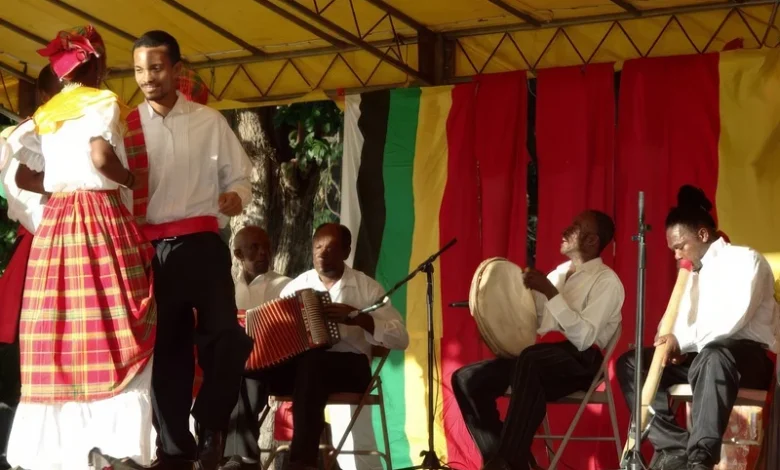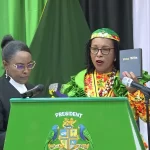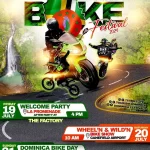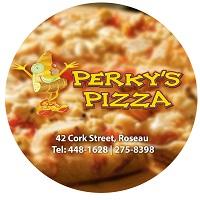Traditional and Folk Dances of Dominica

Traditional and Folk Dances of Dominica vibrantly reflect the island’s diverse cultural influences, blending African, French, and English heritage. These dances are performed throughout the year, especially during Dominica’s independence celebrations, village festivals and other community events, bringing people together through lively movement, music, and song.
Key Traditional Dances
- Bèlè: A vibrant Creole dance accompanied by the Tambour Bèlè, involving call-and-response singing and energetic solo performances.
- Quadrille: A formal French-inspired square dance performed by four couples following specific figures, central to Dominica’s cultural celebrations.
- Lancers: A British-origin dance performed in five or six figures, kept alive by local cultural groups.
- Mazouk: A slow-paced couple’s dance, like a waltz, typically performed during special occasions like weddings.
- Heel and Toe / Polka: A lively, fast-paced dance with quick footwork, blending European styles with local rhythms.
- Sotis (Schottische): A hopping and gliding European dance performed in pairs, modified to fit Creole rhythms.
- Contredanse: A blend of African and French influences, once a formal dance, now social and interactive in style.
- Cotillion: A French-origin group dance featuring intricate patterns performed at formal cultural events.
- La Ronde: A circular, communal dance where participants move in a ring, holding hands, symbolizing community unity.
Instruments and Cultural Elements
These traditional dances are often accompanied by various instruments, including the Tambour Bèlè, ting ting (triangle), and chak chak (shakers), adding rhythm and energy to the performances. The dances serve as a way of preserving Dominica’s cultural heritage, which has been passed down through generations. The Division of Culture and local cultural groups promote these dances during events like Creole Day, village feasts, and other social gatherings.
Modern Significance
Dominica’s traditional and folk dances celebrate the past and are vital to the island’s identity and community spirit. Cultural groups continue to perform these dances at schools, village events, and national festivals, ensuring this unique aspect of Dominican culture remains alive. These dances bridge the island’s history and vibrant present through government initiatives and cultural festivals.




